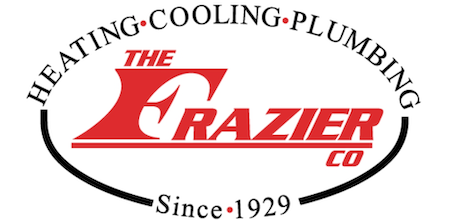
Ceiling fans are one of the most underrated ways to enhance comfort and lower energy costs. By enhancing air circulation and assisting your HVAC system, ceiling fans and energy efficiency are truly a natural pairing. They offer a cost-effective, eco-friendly way to keep cool while lessening strain on your AC—potentially sparing you from unnecessary air conditioning repair.
In this blog, the experts at The Frazier Company explain how ceiling fans can improve your comfort while avoiding energy waste with increased HVAC efficiency. We'll also share some HVAC efficiency tips that make the most of ceiling fans.
Comfort vs. Temperature: Getting Comfortable with the Wind-Chill Effect Indoors
Ceiling fans don’t actually change the room’s temperature—they make your home more comfortable by moving air over your skin. This is known as the wind-chill effect, and it can make a room feel up to 4 degrees cooler without adjusting the thermostat. That means you remain cool and enjoy the benefits of indoor air circulation from your ceiling fan while relying less on your air conditioner—helping reduce your electric bill in summer.
The Best of Both: Advantages of Pairing Fans and Air Conditioning Together
There are several advantages to using ceiling fans and air conditioning at the same time, especially on hotter days. By pairing both, you boost HVAC efficiency and maintain a comfortable indoor temperature with less strain from your cooling system.
Benefits of using ceiling fans and AC together:
- Ceiling fans help lower HVAC load by circulating cool air more evenly around the room. Limiting HVAC stress is important, because it can save you from a breakdown that may result in premature AC or furnace installation.
- Using overhead fans improves your indoor comfort by eliminating hot spots and improving air movement.
- Pairing ceiling fans and AC can cut energy consumption. If you have a home automation system, you can even adjust your smart thermostat settings to increase the temperature slightly while your ceiling fan is running.
Clockwise vs. Counterclockwise Ceiling Fan Rotation: What Direction to Spin in Summer and Winter?
To make full use of your ceiling fans year-round, it’s important to set the blades to rotate in the right direction for the season. The direction influences how air flows, which can either or redistribute heat so you feel warmer.
When to rotate ceiling fans counterclockwise
When it's hot outside, ceiling fans should turn counterclockwise at a quick speed. This creates a breeze that pushes cool air downward, enhancing the wind-chill effect and making you feel cooler.
When to spin ceiling fans clockwise
On cold days, set your fan to spin clockwise on a low speed. This softly moves cold air up and circulates heated air down to where you can feel it, helping you feel warmer without adjusting your thermostat.
Things to Look for in a Ceiling Fan
Picking the ideal ceiling fan depends on a few important details, including blade design, airflow rating and room dimensions. First, look for fans with a good balance of ECFM airflow and blade pitch to deliver efficient air circulation in your space:
- ECFM refers to how much air a fan pushes—the cubic feet per minute, or CFM—per watt of electricity consumed. Fans with higher ECFM are the most energy efficient.
- Blade pitch refers to the incline of the blades. A steeper blade pitch moves more air than a shallower pitch but can also put extra load on the motor.
Also, consider room size when sizing a ceiling fan—a fan that’s too small won’t move enough air, while one that’s too large may be disruptive in a smaller room.
Increase Your HVAC Efficiency With the Experts from The Frazier Company
At The Frazier Company, our HVAC experts can help you maintain a cozy home while minimizing wear on your heating and cooling systems. From practical fan advice and air conditioning installation to smart thermostats and furnace repair, we offer comprehensive services that work with your budget. Reserve your appointment by calling 402-581-9502 today.



